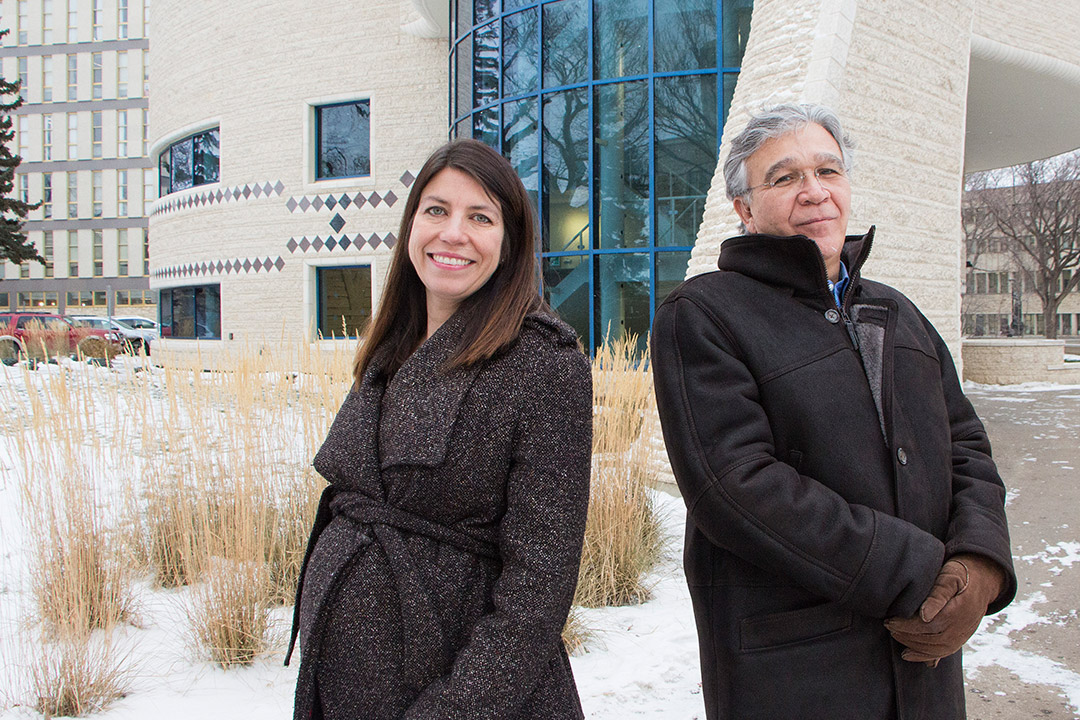
College of Arts and Science unveils Aboriginal faculty recruitment plan
It wasn’t a typical job ad.
By Chris Putnam“The College of Arts and Science invites applications from outstanding emerging or established Aboriginal scholars,” read the posting issued in October. Two tenure-track positions were advertised “at any rank in any scholarly discipline.”
The posting evoked a flurry of applications to 13 departments, along with discussions across the country. But this is only the beginning, said Lawrence Martz, the College of Arts and Science’s vice-dean faculty relations.
Over the next 10 years, the college will “transform its existing faculty complement” by allocating up to three annual faculty job openings to Aboriginal scholars, Martz said. The resulting 30 new hires will raise the proportion of Aboriginal arts and science faculty members to nearly 15 per cent: on par with the overall Aboriginal population of Saskatchewan.
“We think it’s important that our college reflects the society we live in, but it’s not just a matter of numbers,” said Kristina Bidwell, associate dean Aboriginal affairs in the College of Arts and Science. “By being more inclusive, we become more successful. We grow our knowledge base and we connect more to our world.”
In its mission, vision and values statement, the U of S pledges to “be an outstanding institution of research, learning, knowledge-keeping, reconciliation and inclusion with and by Indigenous peoples and communities.”
“Arts and science is leading the way with this very important initiative and it sets the tone for other colleges to proactively recruit Indigenous scholars to this university,” said Elizabeth Duret, U of S inclusion and diversity consultant. “This strategy aligns well with our Indigenization efforts and truth and reconciliation calls to action.”
The college had those commitments in mind as it developed its plan, said Bidwell.
“If we want to meet these goals, we need to have more Indigenous faculty who can inspire our students, bring Indigenous knowledge into our curriculum and research, and bring their perspectives to everything that we do,” she said.
This ambition has been in place for years, but of the nearly 300 current College of Arts and Science faculty, only four per cent self-declare as Aboriginal.
“We recognize that we are far short of where we need to be,” said Martz.
A different approach was needed. Rather than advertise positions in specific departments, the college chose to make its postings open-field and open-rank to ensure a large, competitive pool of candidates and to encourage representation across many areas.
Instead of relying on special funding, the strategy makes use of job openings that arise each year through the regular faculty renewal process.
“We wanted to make a serious commitment, not an add-on program,” said Martz. “Even in these times of financial restraint, the approach we’re taking allows us to move forward.”
Another priority was maintaining all of the standards and processes that apply to any faculty search, including making appointments only with the full support of the home departments.
“As always, the critical decisions about hiring are made by the experts at the department level,” said Martz.
“Our expectations in terms of demonstrated excellence in scholarship and teaching are the same when we hire any faculty member.”
The response to the plan has been “overwhelmingly positive,” but reaching this point took work, Martz said.
Many groups were consulted, including Aboriginal and non-Aboriginal faculty, human resources specialists, university leaders and the University of Saskatchewan Faculty Association.
Those consultations continue as the plan rolls out, and diversity workshops have been made available to staff and faculty involved with hiring committees.
“We know that no process is perfect. But even though there has been discussion of the details, we haven’t talked to anyone yet who has been against this in principle,” said Bidwell.
Applications from the October job posting are now being reviewed. The first two hires under the new recruitment program are expected to start in the College of Arts and Science by the fall.
“We hope that in a couple of years, this is no big deal; it’s just what we do,” said Martz. “If we get there, I think we’ll have made some real headway.”
Chris Putnam is a communications officer in the College of Arts and Science.

